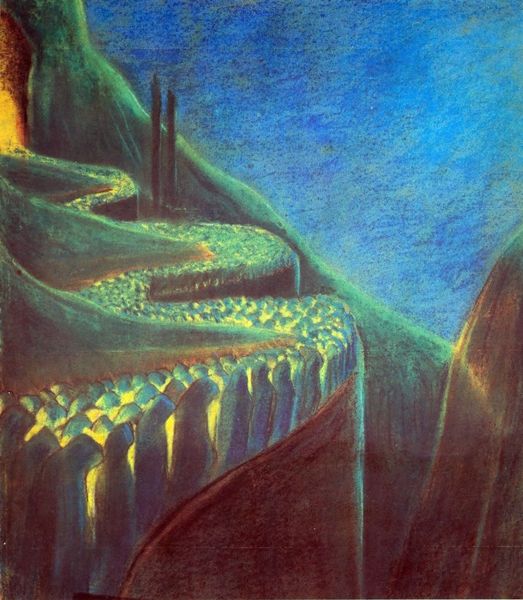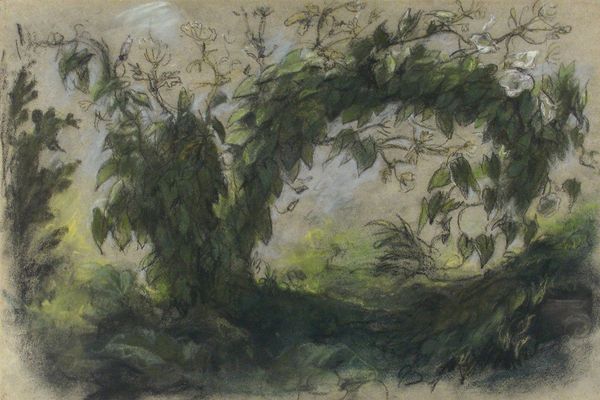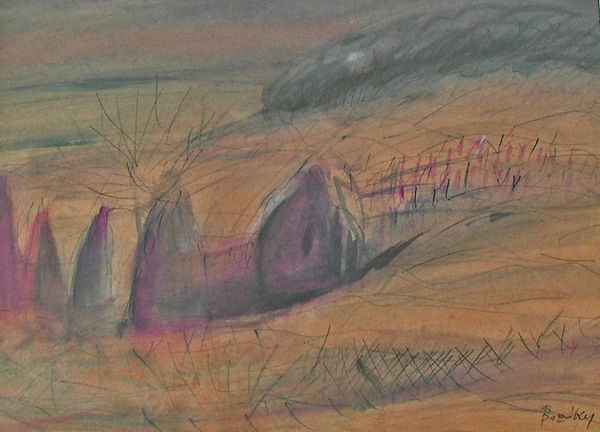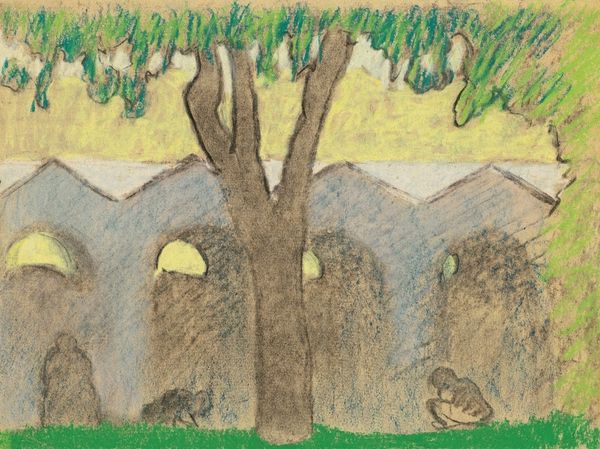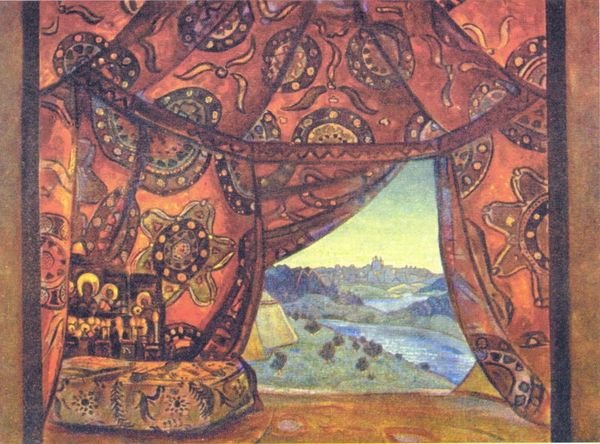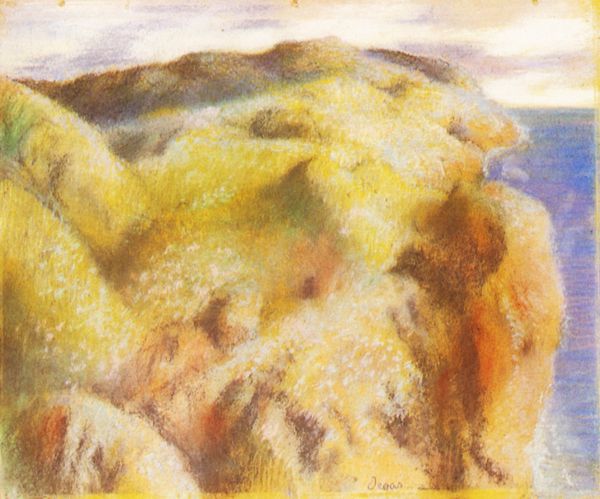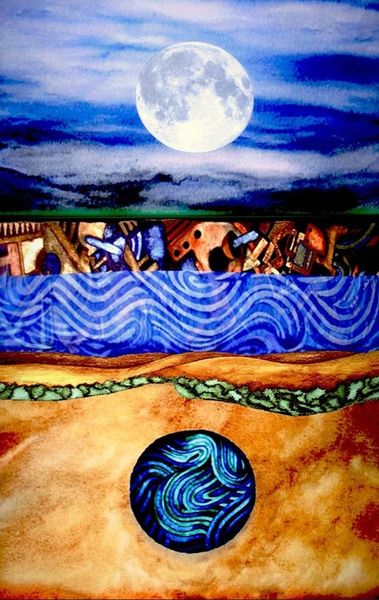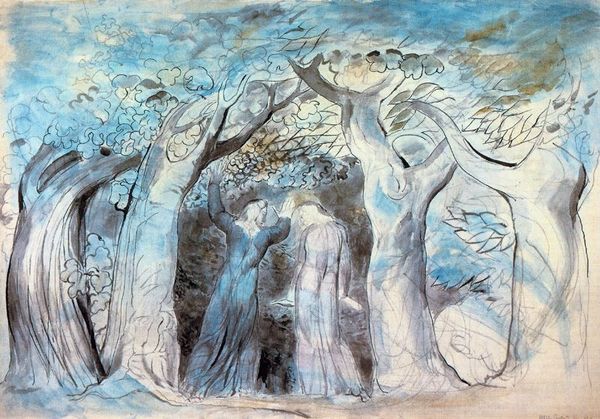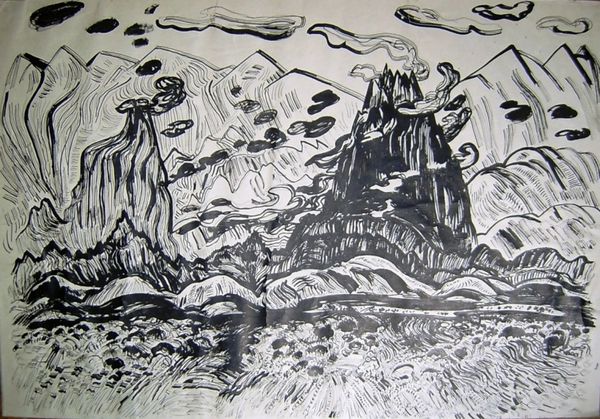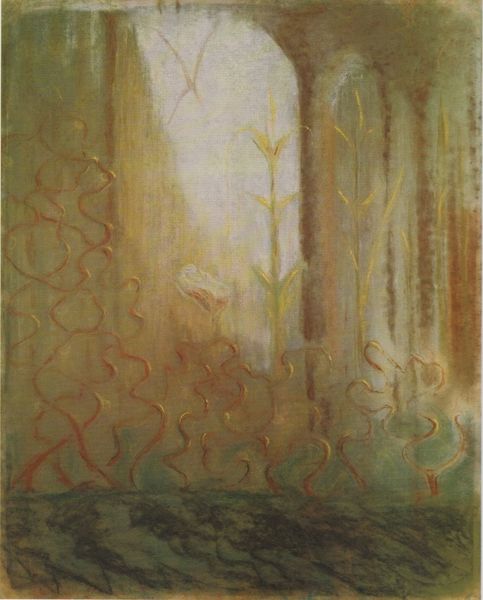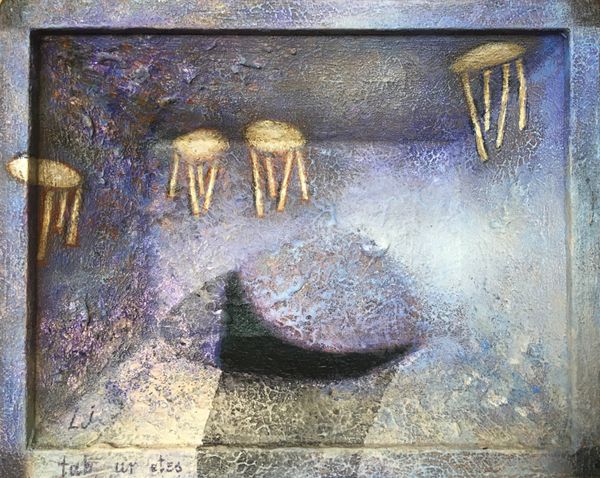
painting, watercolor
#
painting
#
landscape
#
watercolor
#
orientalism
#
symbolism
#
watercolor
Copyright: Public domain
Curator: This is Nicholas Roerich’s 1909 watercolor, "Tent of Ivan the Terrible." Editor: Oh, my! It's giving me cave painting vibes meets faded tapestry. There’s something claustrophobic yet strangely peaceful about the composition. Curator: Note the use of orientalist and symbolist styles which manifest in the texture and the overall rendering of space. There is also a certain flatness of perspective at work here, a sort of deliberately restricted field of depth. Editor: Exactly! It’s like peering through a keyhole into a dream. The soft watercolor washes create a hazy, dreamlike quality that seems to obscure rather than reveal. The muted palette too—a delicate balance of browns and mauves—lends it this antique air. Curator: Precisely, these muted colors function semantically, evoking a specific kind of historical imagination, and further underlining the symbolic associations that adhere to the work. Consider how Roerich constructs the gaze in this image, we’re quite literally positioned within. Editor: Positioned indeed! As if we are inhabiting history itself, maybe we're in on a secret about Ivan that history books wouldn't dare tell. The swirling designs on the "tent" walls—they almost resemble primitive artwork—add to that layered sense of time. There's definitely an invitation to look closer at historical constructions embedded in that surface, and Roerich delivers that perfectly. Curator: Furthermore, it's worth noting Roerich’s formal handling of interiority versus exteriority—that carefully balanced void right in the center of the frame creates a potent dialectic tension. Editor: You know, the more I look, the more it seems like Ivan's tent isn't just a place but a portal, the sort through which we are invited to conjure visions of the past! All those abstract markings seem charged somehow… ready to whisper stories if only we knew how to listen. I find that powerfully evocative! Curator: Yes, this work functions as more than representational artifact—its form itself engages directly with memory, history, and symbolic interpretation. Editor: Roerich certainly succeeded at summoning a ghost—of a tent, of an era, and of something deeply human lost within it all!
Comments
No comments
Be the first to comment and join the conversation on the ultimate creative platform.
